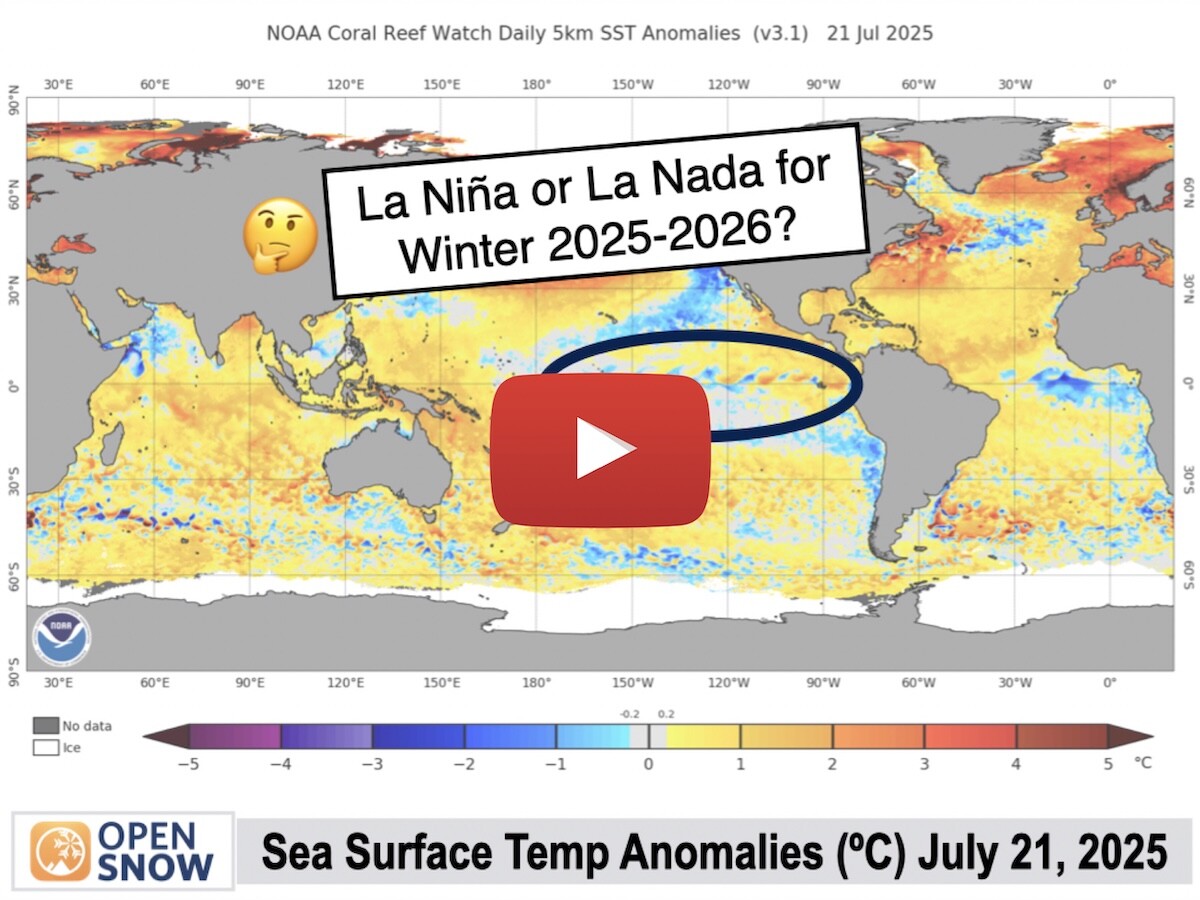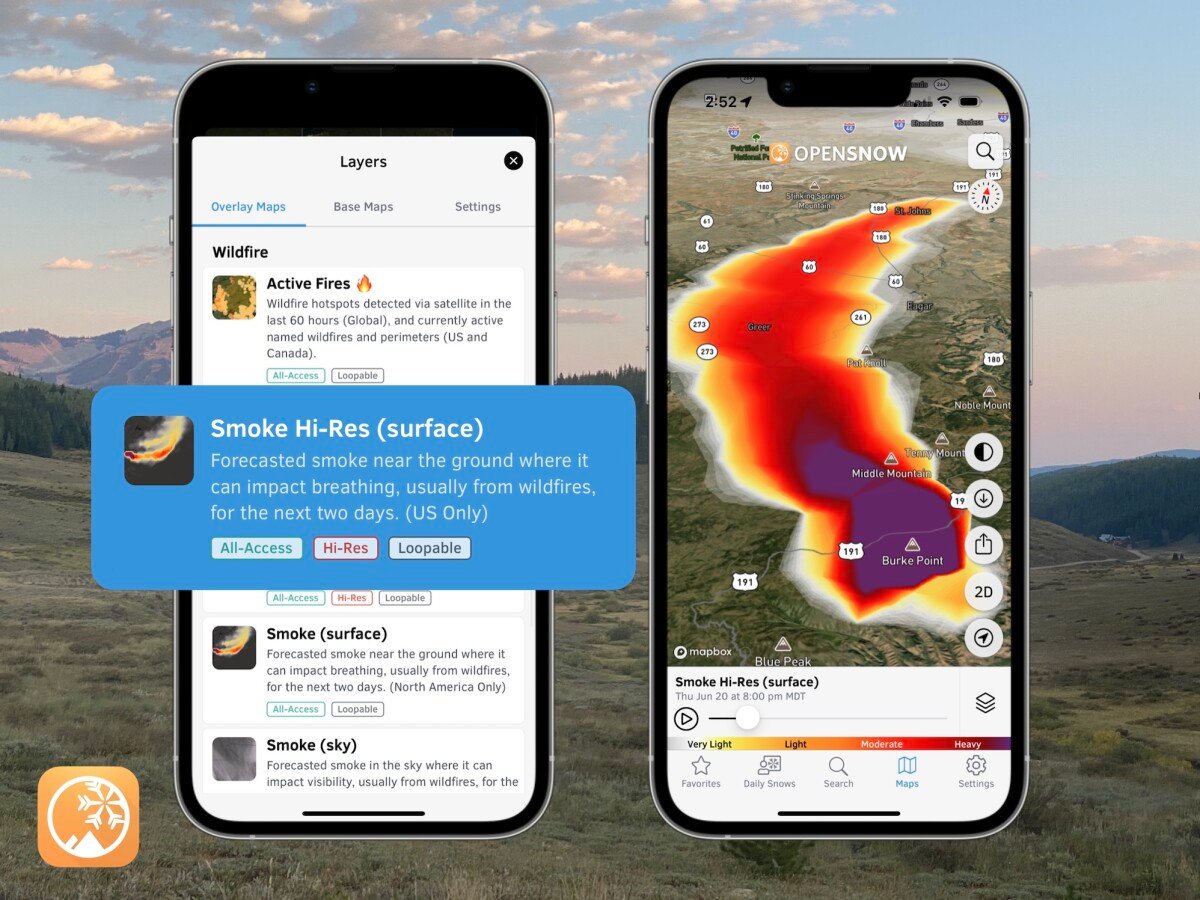Western US Daily Snow

By Alan Smith, Meteorologist Posted 3 years ago July 22, 2022
Monsoon intensifies this weekend
Summary
Thunderstorm activity will be more isolated on Friday, but will pick up in coverage and intensity across the Four Corners states this weekend as the monsoon intensifies. Areas east of the Divide in Montana, Wyoming, and Colorado will also see an uptick in storms as several backdoor cold fronts arrive. A heatwave is expected for the Pacific NW next week as high pressure builds over the West Coast.
Short Term Forecast
Forecast Highlights:
- Monsoon strengthens a bit each day from Friday to Sunday across the Four Corners states with thunderstorms becoming more widespread.
- Flash flood threat increases across the Southwest through the weekend, especially on Sunday.
- Thunderstorms for the far Northern Rockies and eastern slopes of the Continental Divide this weekend as a series of northwest flow disturbances arrive.
- High fire danger for portions of Idaho, Wyoming, and SW Montana on Friday.
- Pacific Northwest heat wave expected next week with well above average temepratures.
Synopsis:
The monsoon will continue in a somewhat-weakened state on Friday across the Four Corners region with more isolated thunderstorm coverage compared to recent days. Meanwhile, a trough of low pressure will move across the Northern Rockies, while areas near and just south of the jet stream in Idaho and Wyoming will see elevated fire danger due to strong winds and low relative humidity.

Heading into the weekend, the monsoon will strengthen across the Four Corners, while a series of disturbances and weak cold fronts will slide down the eastern slopes of the Continental Divide.
Monsoon Update:
The monsoon will be in a somewhat weakened state, at least compared to recent weeks, across the Southwest on Friday with Central Utah and Western Colorado being the most favored areas.

However, the monsoon will reload this weekend with an uptick in moisture expected starting on Saturday, and an even greater uptick expected on Sunday.
A cold front will also move into Eastern Wyoming and Northeast Colorado on Sunday, with moist upslope winds behind the front resulting in greater thunderstorm and rainfall potential along the eastern slopes of the Continental Divide.

Isolated flash flooding will be possible in vulnerable areas on Friday and Saturday. A more substantial flash flood threat is then expected on Sunday throughout the Southwest, with dry washes, slot canyons, burn scars, and steep/rocky terrain seeing the greatest potential.

Lightning Outlook:
Isolated to scattered thunderstorms can be expected across Northern/Central Utah and Western/Central Colorado on Friday, mainly west of the Continental Divide. Thunderstorm coverage will increase heading south into New Mexico and across Southern Arizona, while Northern Arizona will see less coverage.
The trough of low pressure moving across the north will also act as a trigger for isolated thunderstorms across the Northern Rockies.

On Saturday, thunderstorm coverage will increase noticeably throughout the Four Corners states. Isolated thunderstorms can also be expected across the Northern Rockies as well as Northeast Washington.

Scattered to widespread thunderstorms can be expected across the Four Corners states again on Sunday, with activity extending into Southern California as well. Numerous thunderstorms are also expected east of the Divide in Montana and Wyoming and into the Black Hills of South Dakota.

Temperature Outlook:
Friday is shaping up to be a hot day across the Southwest, Central Rockies and Southern California with cooler temperatures across the Northwest.

As we head into the weekend, the heat will start to ease across the Southwest and Central Rockies thanks to a strengthening monsoon along with a series of cold fronts sliding down the eastern slopes of the Rockies.
Starting on Sunday and continuing into early next week, a tall ridge of high pressure will build along the West Coast and this will support the development of a heatwave over the Pacific Northwest with temperatures running well above average by Monday and Tuesday. Northern and Central California will be hot as well.

Fire and Smoke Outlook:
The Moose Fire in Idaho is the big event right now in terms of western wildfires and had grown to 20,000 acres as of Thursday morning. Smoke from this fire is primarily confined to portions of Southwest Montana with occasional smoke transport into Idaho and Wyoming.

Elsewhere, fire activity is pretty isolated across the West and most fires are on the smaller side with smoke remaining localized.
Fire weather concerns will be elevated across Eastern Idaho, Wyoming, and Southwest Montana on Friday as a trough passes north of the area, resulting in dry and windy conditions with low relative humidity. There is also a chance of isolated dry thunderstorms that could produce more lightning and wind than rain.

Extended Forecast
Outlook for Monday (7/25) to Thursday (7/28):
A similar pattern to Sunday will continue early next week with a strong monsoonal flow remaining in place across the Southwest. Widespread thunderstorms with flash flooding potential can be expected across Arizona, Southern Utah, Northwest New Mexico, Southern Colorado, Southern Nevada, and Southern California.
Areas near and east of the Continental Divide in Montana and Wyoming will continue to see more isolated thunderstorms as disturbances arrive from the northwest.
Here is the 2-day rainfall projection for Monday and Tuesday:

On Wednesday and Thursday, a similar pattern is expected with monsoonal moisture remaining entrenched across the Southwest, while the Northern Rockies should start to see a drying trend.
The Pacific Northwest will remain much hotter than average for most of next week as high pressure remains centered over the West Coast.
Outlook for Friday (7/29) to Friday (8/5):
Temperatures will start out well above average across the Pacific Northwest early in this period but will trend cooler heading into the first week of August. Temperatures are expected to be below average across much of the Southwest due to an active monsoon.

Medium range models are all indicating significant wet signals across the Southwest during this period with moisture potentially extending into SoCal and the Sierra Nevada Range as well. Frequent thunderstorms will continue across the Southwest along with a high potential for flash flooding in dry washes and slot canyons.

Thanks so much for reading! Next update on Monday (7/25).
ALAN SMITH
About Our Forecaster




